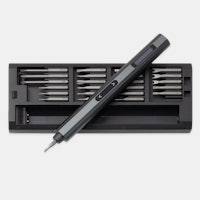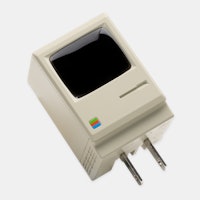Click to view our Accessibility Statement or contact us with accessibility-related questions




Massdrop 101: Intro to Flashlights

search
close
Sort by: Newest
keyboard_arrow_downLoneRanger
28
Jan 21, 2019
hubnerfalkI believe it's an older model of the Factor Ghost 130 Microlight
USB Rechargeable
PRODUCTS YOU MAY LIKE
Trending Posts in More Community Picks

Graham88
Completely surprised by the lack of blade diversity here on Drop...
I’ve been a collector of Blades since before my teens, and a retailer coming up on 15… or maybe 20 years. Drop has really been kind of an interesting experience for me, because I do occasionally get to see some unusual tech and sometimes EDC items that otherwise I might not have been aware of. And maybe it’s because I have a deep love of cutlery and bladed weapons, but I find myself trolling through the site looking at it what’s available; and it’s just it’s pretty much the same. And the bladed community here is just always confused me.. every single knife is about the same, they’re almost all drop points and although the handle materials change and brands change.. it’s really just the same knife over and over and over again... occasionally you’ll see a tanto or a slight variant; but rarely… and almost never a serrated blade. And I’m just deeply amazed at this diversion of serrated blades. And I’m just surprised there isn’t more of a request for diversity here.... and I...
Mar 12, 2020
JellyDPhoto
Can we get Sony E-Mount or other mirrorless camera options please..
Would be nice to see some Sony E mount full frame cameras on here. I currently shoot with a A99 and they killed the lense path for better or more option lenses and now is all E-Mount. 🤔
Jan 13, 2020
RayF
There Are Pandas, and Then There Are Pandas.
And this isn't either of them! The Pandas we're talking about here, are watches, not bears. And what got me thinking about them (again) was a link posted this morning by @cm.rook who pointed a few of us to the very attractive (and not terribly priced) Yema "Rallygraph" Panda which, in it's most traditional arrangement, looks like the one on the left, but can also be had in the version on the right: The model on the left is a true Panda, while the model on the right is called a reverse Panda. The reason for that distinction is clear--Panda bears, only come in the first arrangement. Now at this point, everyone should be thinking about the most well-know Panda, The Rolex Panda, which is actually a Daytona, and among Rolex Daytonas, the most famous of which is the Paul Newman Daytona, which was famous first, because it was Paul's, and second because it sold at auction for $17.8 million (US Dollars). The story of that auction is well-known so I'll only...
Nov 8, 2019






There was a time when night-shift security guards were the only people carrying flashlights. Even a decade ago, flashlights were big, bulky, and minimally functional. They also required huge, inefficient batteries. But they’ve come a long way.
The Many Uses of a Flashlight
Illuminating a keyhole, signaling for help, rummaging a basement, reading in bed, hammering a stake, examining a map, blinding an attacker, securing loose equipment, navigating a trail, lighting up a campsite, starting a fire—there are myriad uses for a portable torch. These are just a few them. Start carrying one, and you’ll discover at least a dozen more.
Lumens, IPX ratings, candelas—like kids these days, the new generation of flashlights has given birth to a whole new lexicon. Below are a few of the terms associated with modern flashlights, and what they mean in layman’s terms.
Beam distance: This one is fairly obvious. Often referred to as “throw,” beam distance measures how far a flashlight’s beam can extend while effectively illuminating an object. There are surprisingly small flashlights, such as the Lumintop SD75, that boast a maximum beam distance of more than 600 meters. And then there are thumb-size flashlights that offer only 50 or 60 meters of throw. Most EDC-friendly torches, however, provide a max beam distance of about 150 meters. Beam distance is dependent not on lumens (see below), but on the optical performance of the flashlight, or how well the beam is focused.
Candela: Also known as “candlepower,” candela is a measure of beam intensity. That is, how intense the light is in the most focused part of the beam. A flashlight with high peak beam intensity will likely have a high maximum beam distance.
Flood: Flood is the opposite of spot. It’s an assessment of the angle at which light is emitted. For a good example of flood, look at the 60-watt bulb in your lamp at home. Rather than shining on one fixed point, it illuminates a broad area.
IPX rating: Simply put, IPX rating is a measure of water resistance. The scale ranges from IPX 1 to IPX 9, with 1 being the least resistant to water (look out for rain!) and 9 being the most water resistant (bring on the downpour).
Li-ion: Short for “lithium-ion,” this is arguably the most significant contribution to the recent improvement of flashlights. A li-ion battery is capable of harnessing a huge amount of energy in a very small package—and it’s rechargeable. Talk about a game changer.
Lumens: This measures the overall light output of a flashlight. The higher the lumens, the brighter the light. Though it seems counterintuitive, lumens and beam distance are not necessarily related. A high-lumen flashlight can emit extremely intense light, but if that light isn’t focused, the beam distance won’t correlate. A flashlight like this will serve as a much better floodlight than it will a spotlight.
Reflector: The reflector is extremely important in determining maximum beam distance. Depending on the curvature of the reflector (the more parabolic the reflector, the more focused the beam), a flashlight will be either more concentrated or more spread out.
Spot: The opposite of flood, spot refers to a highly focused beam of light. Spotlights excel at throw, or max beam intensity, and are designed to shed light on distant objects.
There once was a time when flashlights had an on/off switch—and that was it. Now, the portable torches preferred by the EDC community are loaded with modes for different scenarios.
High, medium, and low are the most commonly used modes. These determine how many lumens the flashlight is putting out. As you might have guessed, continuous runtime decreases when lumen output increases.
SOS, Beacon, and Strobe modes are also popular additions to modern flashlights. Considered a distress signal, SOS mode uses Morse code to spell out SOS in light: three short bursts, three long bursts, three short bursts. Beacon mode, like SOS, is designed to attract attention, but it’s often used in less-distressing situations. The sequence consists of long bursts of light in slowly repeating intervals. Strobe mode is most commonly used as a method of self-defense. If you’ve ever been exposed to a strobe light at close proximity, you know how disorienting and blinding it can be.
There you have it: Flashlights 101. But that’s only the beginning. Stay tuned for posts that dig deeper into flashlights—materials, modes, and more. In the meantime, if you have questions or comments about the article, or about torches in general, leave ‘em below. Or, if you have personal recommendations to share, we’d love to hear them (and see pictures, too)!
Hit the "Follow" button to get notified about future posts from this account.